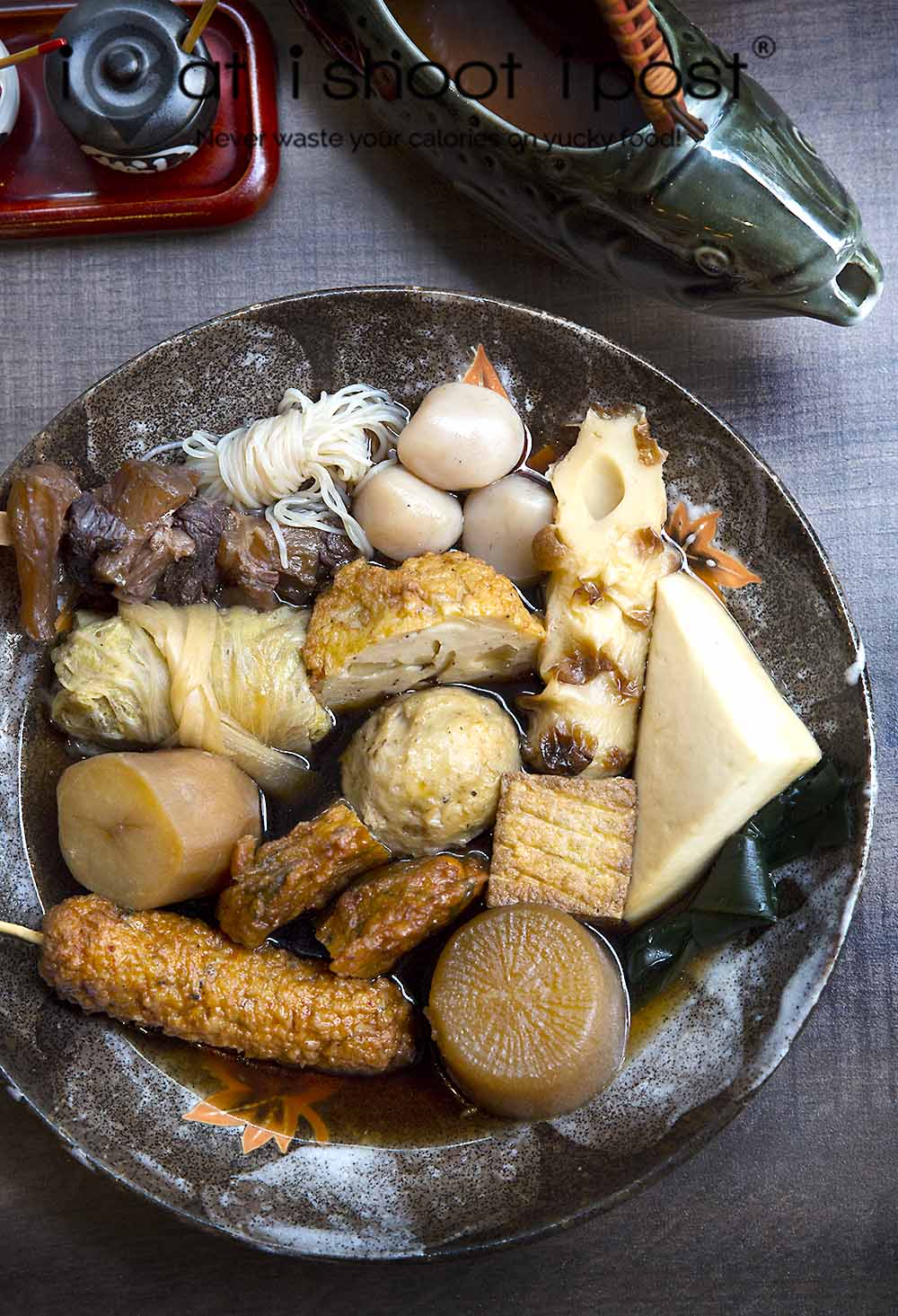
What is oden?
The typical Singaporean response would be: “Oh, it’s Japanese yong tau foo!”
In some ways it is true because a lot of the items in oden are made from fish paste and tofu and cooked in a soup. However, unlike yong tau foo, the tofu is not really 酿 (niang=stuffed) which is one fundamental difference. A person from Malacca might describe it as “Japanese lok lok” since a lot of the items are skewered and then dipped into the soup to warm it up.
Oden has been around since the 14th century and originated from dengaku; skewered tofu which are grilled and served with miso paste. Over time, dengaku was shortened to “den” and the honorific “o” was added to become “oden”.

I think oden is still quite new to many Singaporeans. I have spoken to a few of my friends and most still don’t quite understand the whole concept. So, in this post, I will just give a quick primer so that you will have an idea of what you are eating.
First thing we need to talk about is the soup. Like most of the food in Japan, the style of any particular dish varies from region to region. So the soup base in, say, Tokyo is going to be different from those in Shizuoka.
We start with a pot of light dashi stock in which chunks of daikon are simmering away for hours. This stock is then transferred to a 2nd pot where the items made of tofu and konjac are cooked. The soup thus takes on the flavour of the tofu. A soups in pots 1 and 2 are then used to make the soup for pot 3 where the items made with fish paste are simmered. There is also another pot which is used to simmer meat items like beef and chicken and the soup in this pot would taste like beef broth. So, there are typically a few different soup flavours depending on the items in it.
Let’s now have a look at the different oden items:
NB: * denotes items which I highly recommend

Daikon* 大根 is considered to be the most basic item in the oden menu. It is made by simmering white radish for at 3-4 hours till the radish is soft and has fully absorbed the dashi. A good daikon requires good control of the temperature of the dashi and should have a nice gradient of texture and degree of dashi absorption from the surface to the core. If it is under cooked, the daikon will be too hard. If it is overcooked, the daikon will lack the texture gradient between the core and the surface! So it isn’t as simple as it seems!
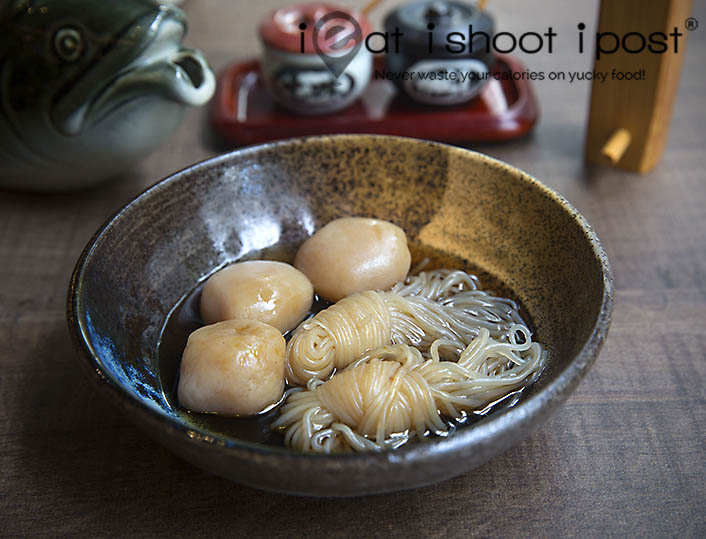
Konnyaku* こんにゃく is made from the corm or underground bulb of the konjac plant. It is composed of mainly fibre and water so it fills the tummy without adding the calories. Most oden eateries serve konnyaku that appear like grayish slabs of tofu. The konnyaku at Public Izakaya are a bit more unique. They are specially imported from Ishikawa prefecture and look like fishballs. Unlike the normal konnyaku, these konnyaku balls have been marinated so that it has its own flavour.
Shirataki 白滝 is also made from konjac but in the form of noodles. It is commonly used for sukiyaki so you may already be familiar with them. The texture of konnyyaku is best described as more crunchy than agar agar and almost like chicken cartilage.
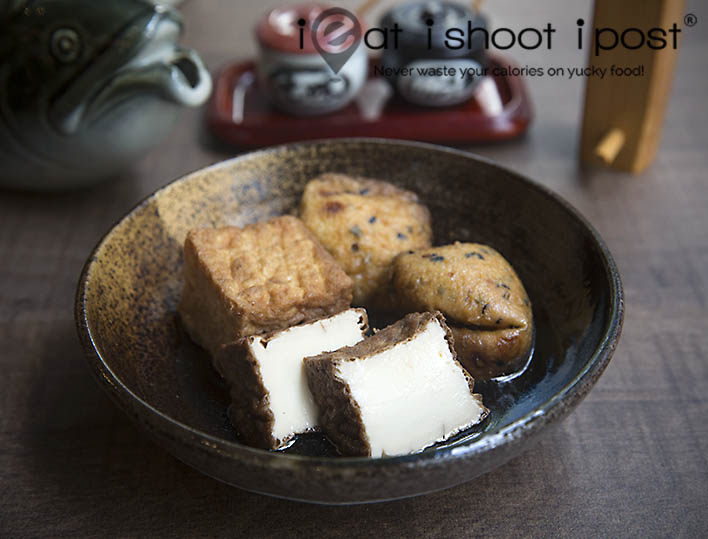
Atsuage* 厚揚げ is deep fried tofu. The ones at Public Izakaya are imported from Japan and are very good and well worth a try. The tofu is very dense, yet creamy and flavorful and the skin has a savory flavour that justifies the price.
Ganmodoki がんも is deep fried balls of mashed tofu mixed with vegetables. It’s name in Japanese means “fake goose” and it is said to be a vegetarian substitute for goose meat. There are many types in the market. Some use eggs as a binder whiles others may have grated yamaimo (mountain yam).
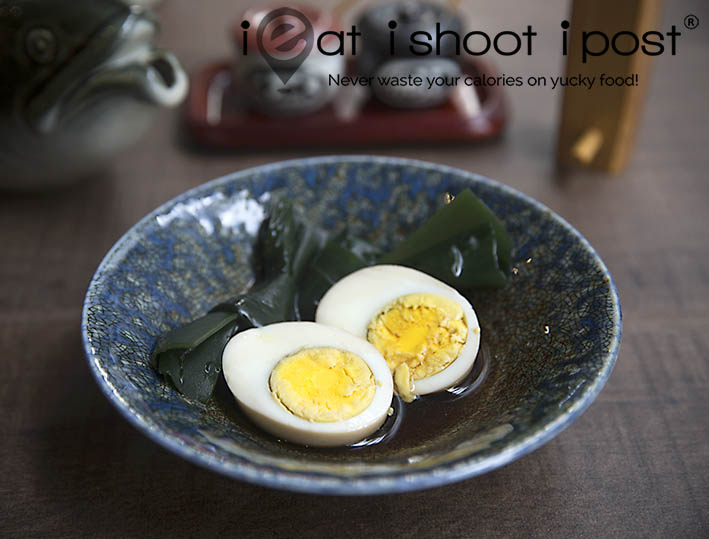
Konbu 昆布 is simmered kelp. It is often used for making dashi for soup bases. They are quite delicious and provide interesting textural contrast to the other oden items.
Yude tamago ゆで卵 is hard boiled eggs simmered in dashi stock. It isn’t something I would order but it is comfort food for oden regulars.

Jaga imo ジャガ芋 is potatoes simmered in dashi stock. Depending on the season, they may have special variety like the Ruby Nozan pink potato from Ishikawa which is worth trying for the sake of novelty. Incidentally, “Jaga” is derived from Jakarta as potatoes were first introduced to Japan via the Dutch East Indies.
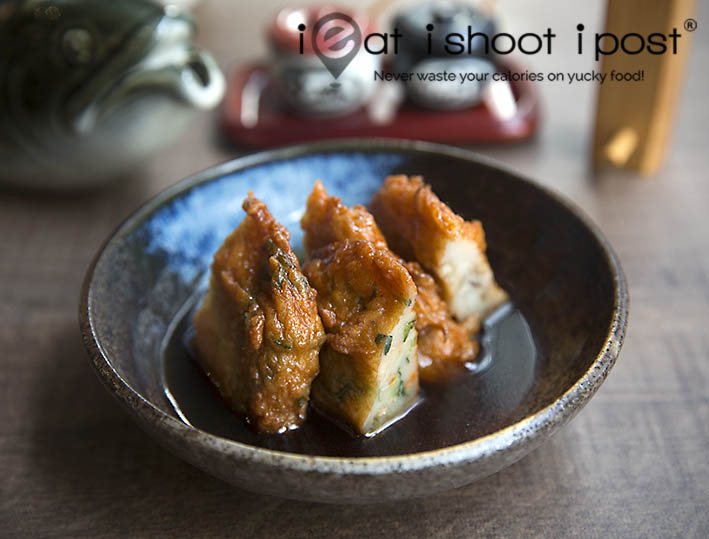
Satsuma age* さつま揚げ are deep fried fish cakes which originated from the Satsuma region of Kagoshima. They are made from surimi, Kagoshima sake, sugar and deep fried. This is one of my favourite things to eat and when I visit Tsukiji market and I can never walk past the satsuma age stall without buying some.
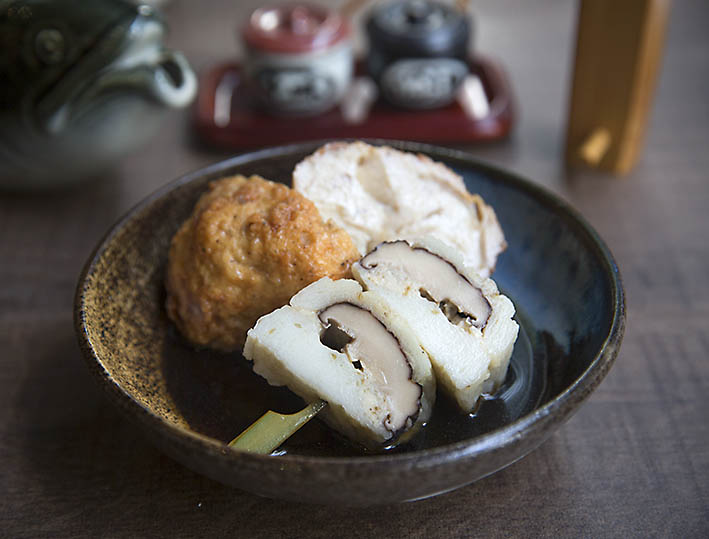
My favourite is the tama negi satsuma age which has white onions in it. They also have ones with shitake mushrooms. The satsuma age are handmade and imported from Tsukiji market.
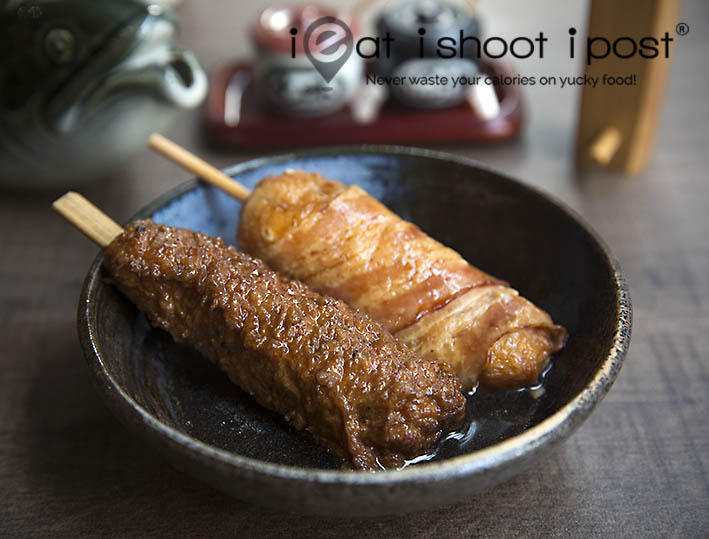
There is also satsuma age made with meat like the bacon cheese* which has fish paste, onions and wrapped with strips of bacon. This might be fusion food but it is delicious! There is also tori satsuma age which is made with minced chicken with paprika. I found the paprika to be a little overwhelming.
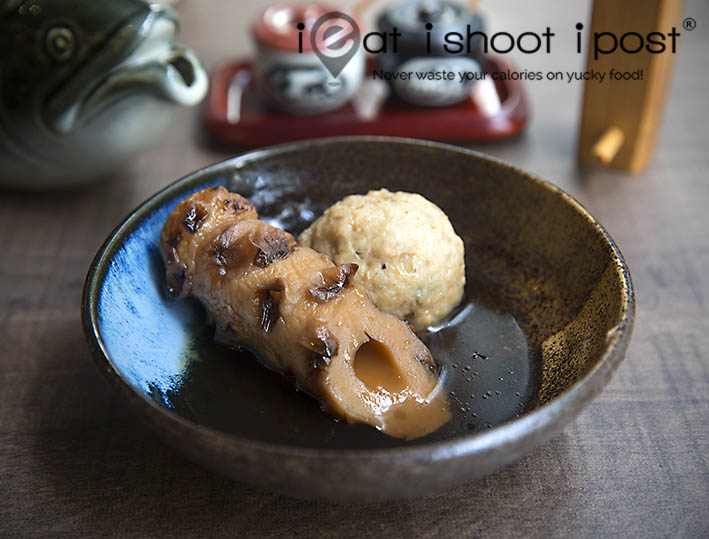
Yaki chikuwa 焼ちくわ is that iconic tubular fishcake which is often found in Japanese dishes. This is essentially fishcake which traditionally was wrapped around a bamboo skewer and grilled which explains why there is a hole in the middle. I find them a bit bland compared to satsuma age and the texture is also soft and not very interesting.
Iwashi tsumire are essentially minced sardine made into balls. They are quite a popular item in Japan. I find them a bit on the fishy side. The texture is quite different from chikuwa or satsuma age and is more like a handmade pork ball.

Tori dango are what they Japanese call chicken meatballs. Together with rooru kyabetsu, these are made at the restaurant. The meatballs are very tasty and have chopped up cartilage to give it that unique crunch
Rooru kyabetsu ロールキャベツ is the Japanese pronunciation of “rolled cabbage”. It’s an item which I am sure many Singaporeans are familiar with as it is also found in Chinese cuisine.
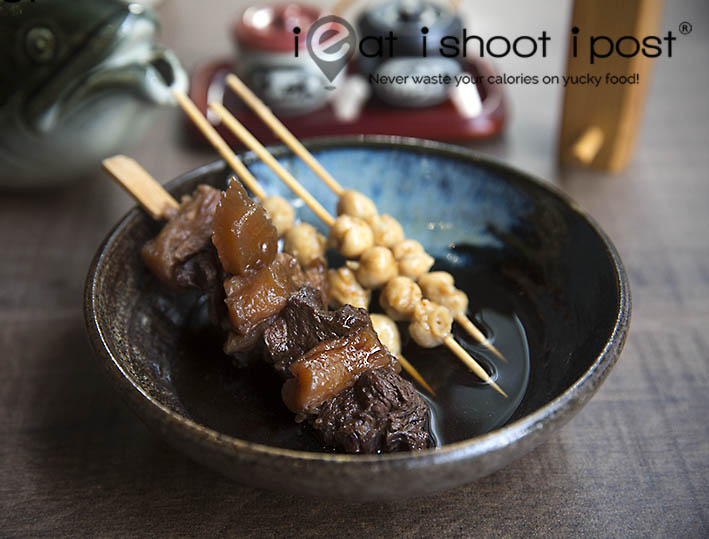
Gyu suji 牛すじ is simmered beef tendon. The skewers here are made with both tendon and beef brisket which has been cooking in the stock for a day and left overnight to fully absorb the flavour of the dashi. The beef was a tad dry but the tendons were nice!
Ika tonbi is squid mouths. It’s one of those things that you probably threw away when you are preparing calamari rings. But the Japanese managed to turn it into a delicacy so that you would pay good money for it. Not something I would order again but worth a try just so that you can say you have eaten it.
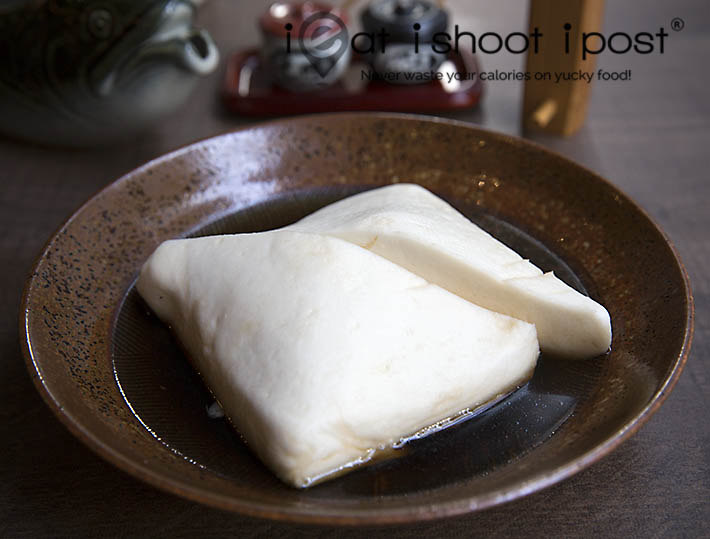
Hanpen* 半片 might look like an innocuous tofu pillow but it is far from it. It is actually made from pure fish paste with lots of air beaten into it so that it has the texture of a marshmallow. The handmade ones are in the shape of a pyramid because of the way the air is slapped into the fish paste. (see video below) They are delicious and the airy texture makes it a joy to eat!
Conclusion
Public Izakaya is a great place for oden. The items are authentic with many imported directly from Japan. The place also has that vibe that makes you feel as if you are in Japan. Aside from the oden, you should also try their other dishes like the braised pork belly and selection of kushiyaki. The prices are reasonable and you should be able to eat quite well for $30-$40 per head.

Acknowledgement
Thanks to Chef Fabian of Public Izakaya for assisting with the photos and information! No fees were paid for the writing of this post.



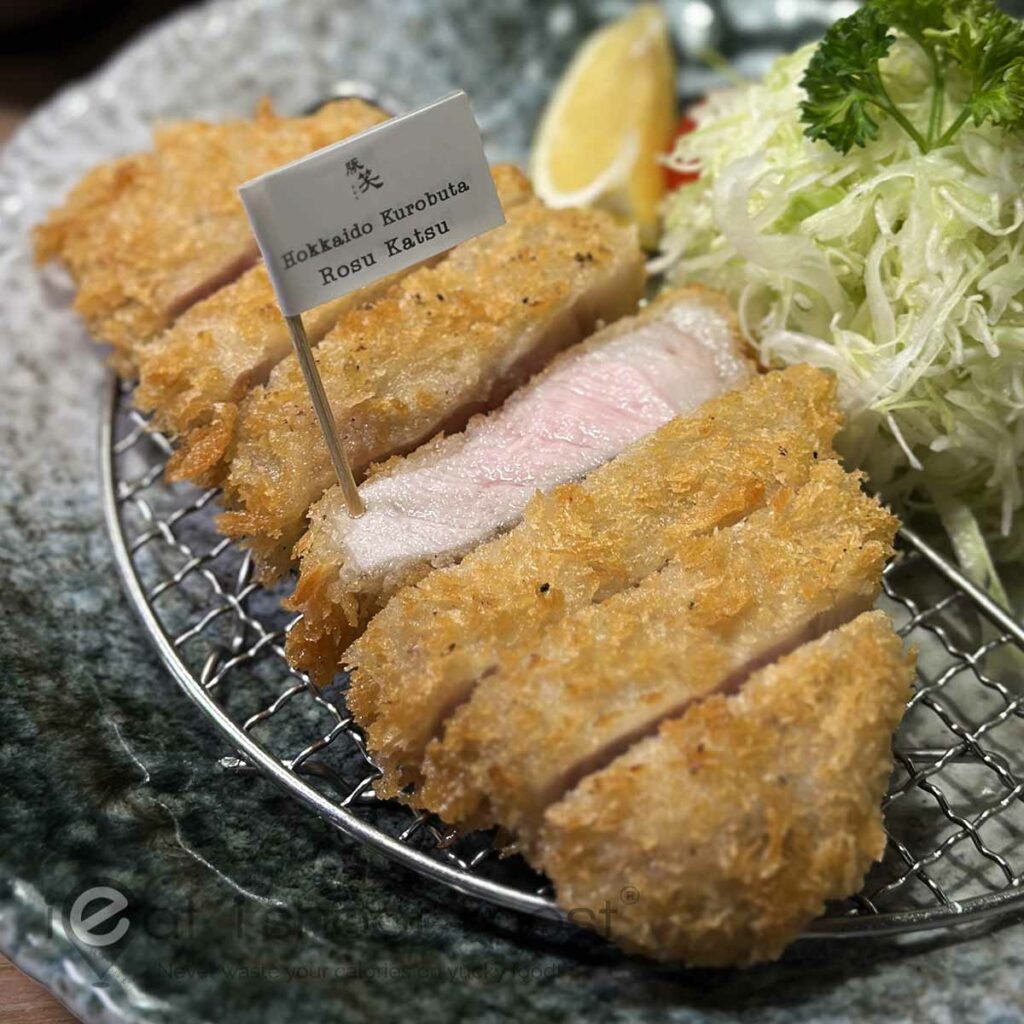
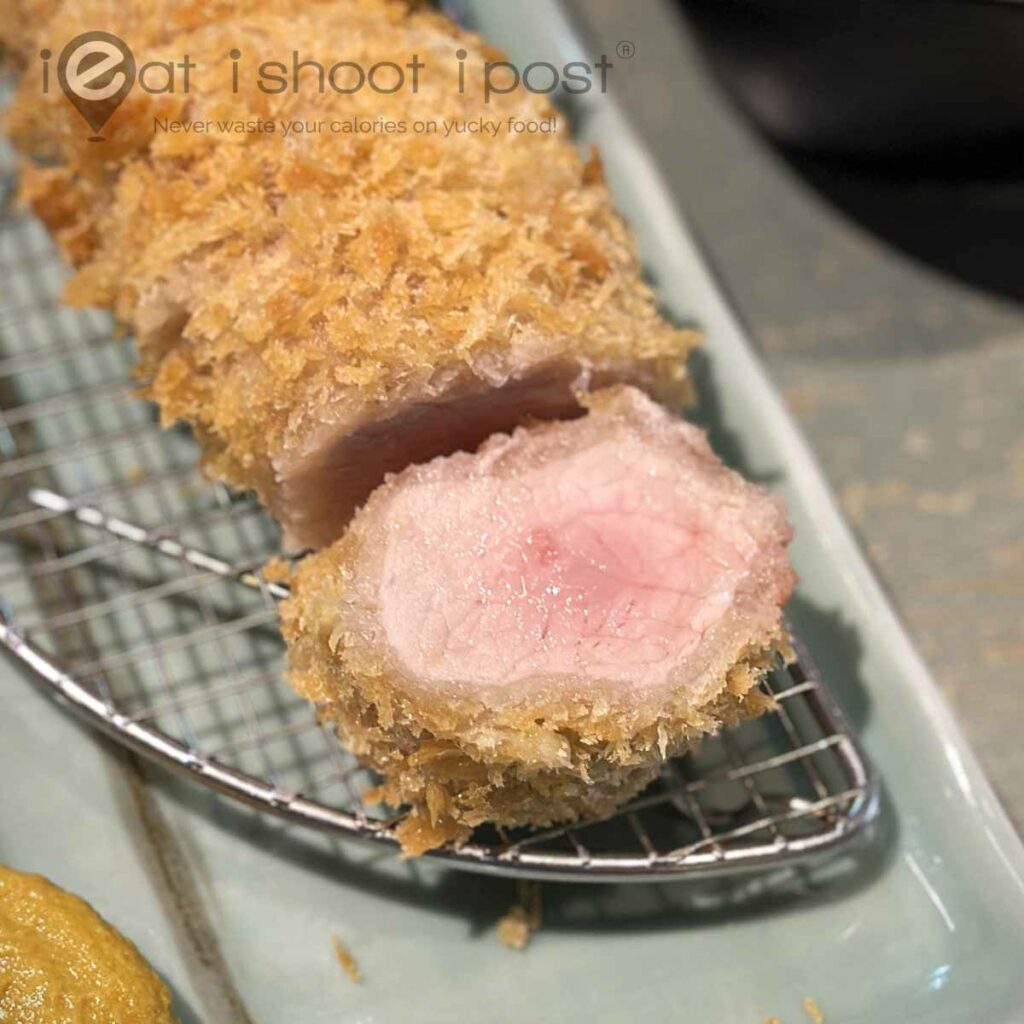
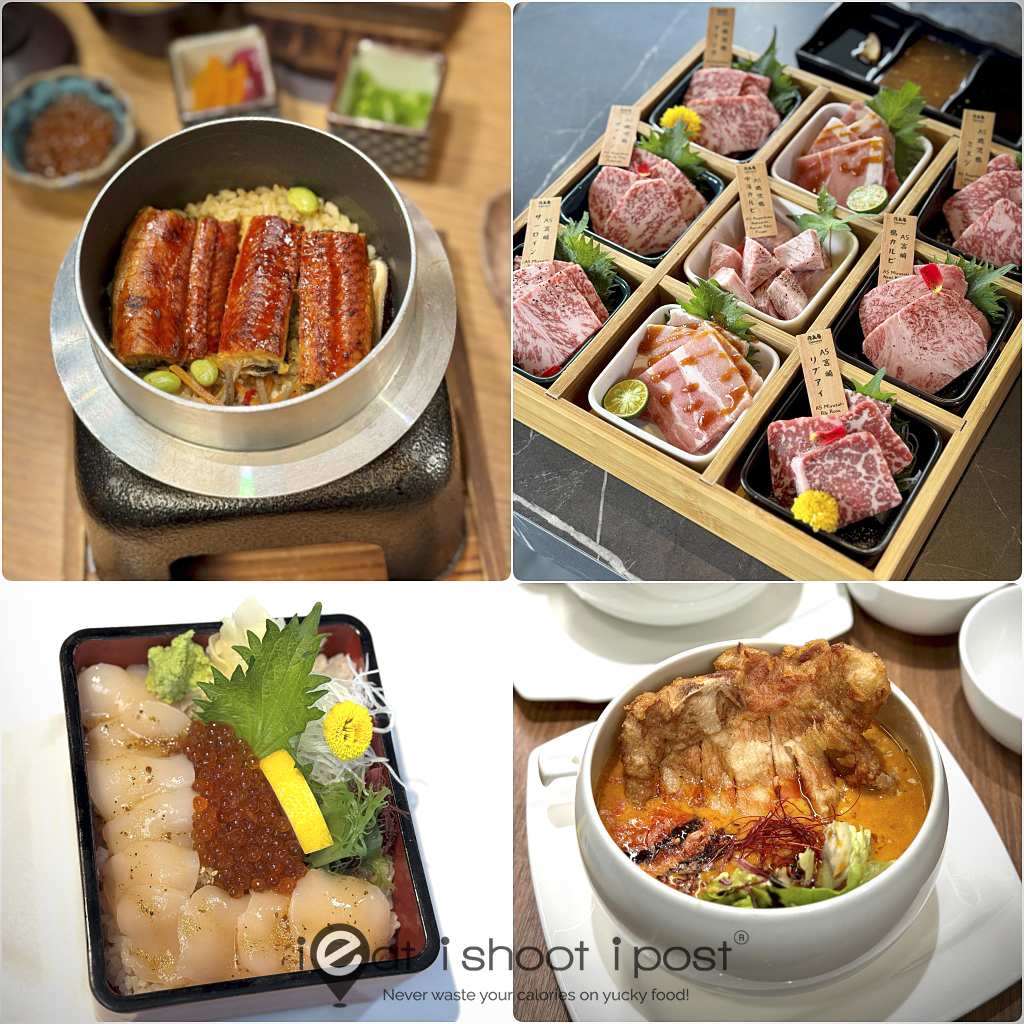
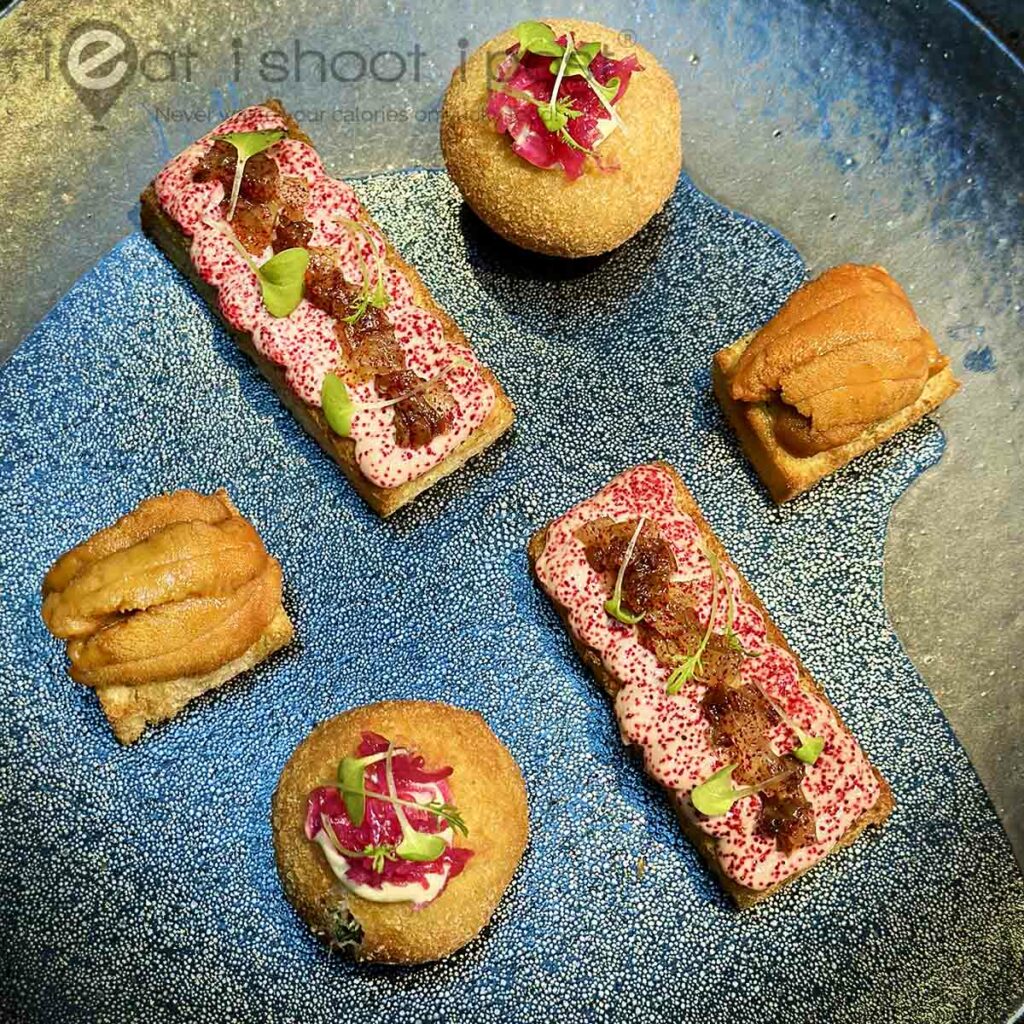
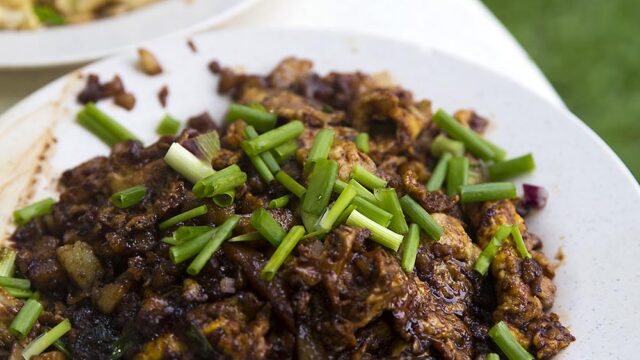
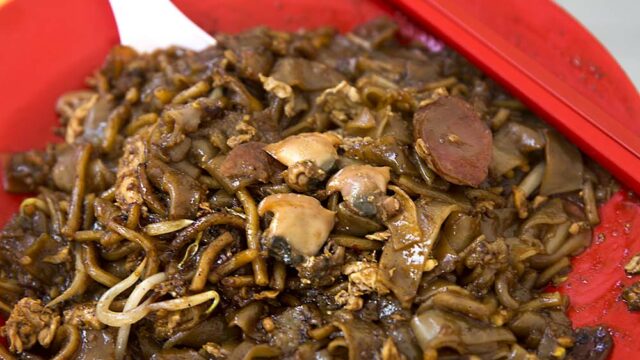
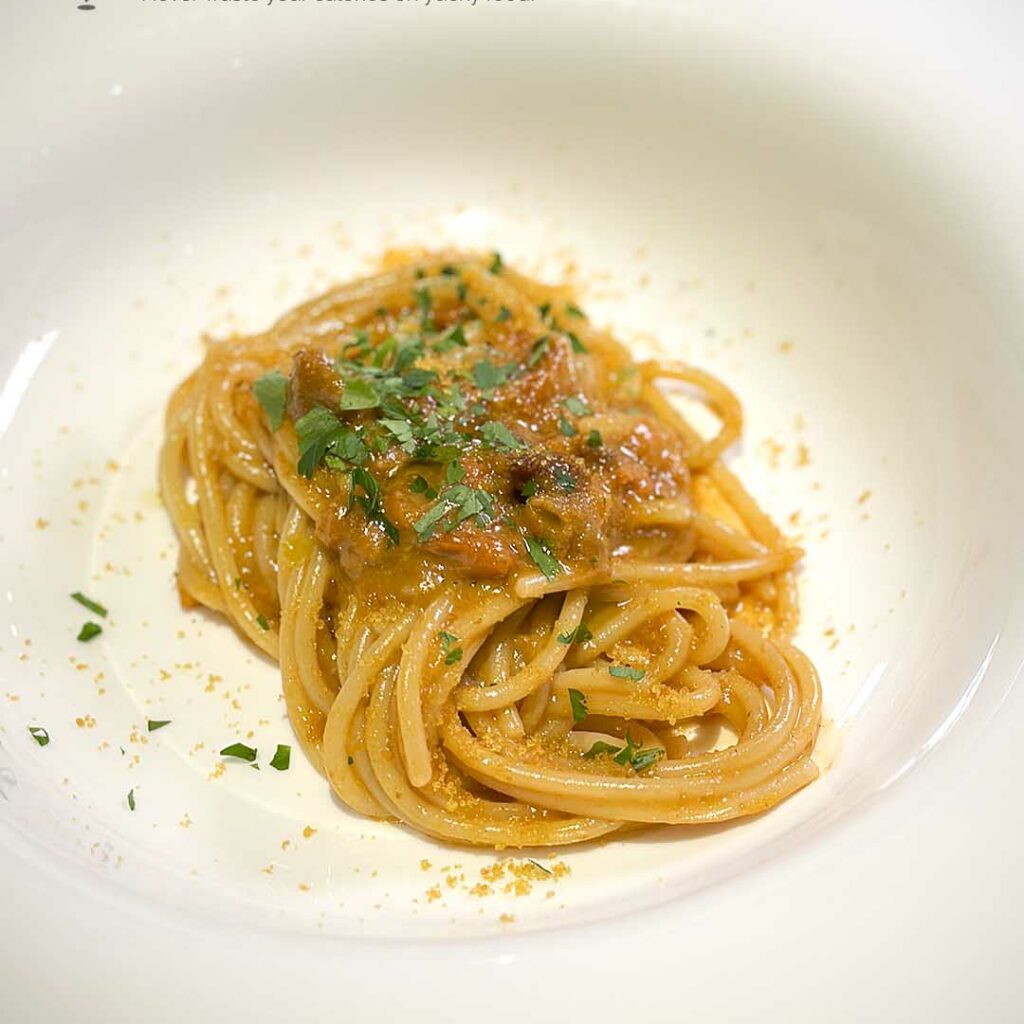
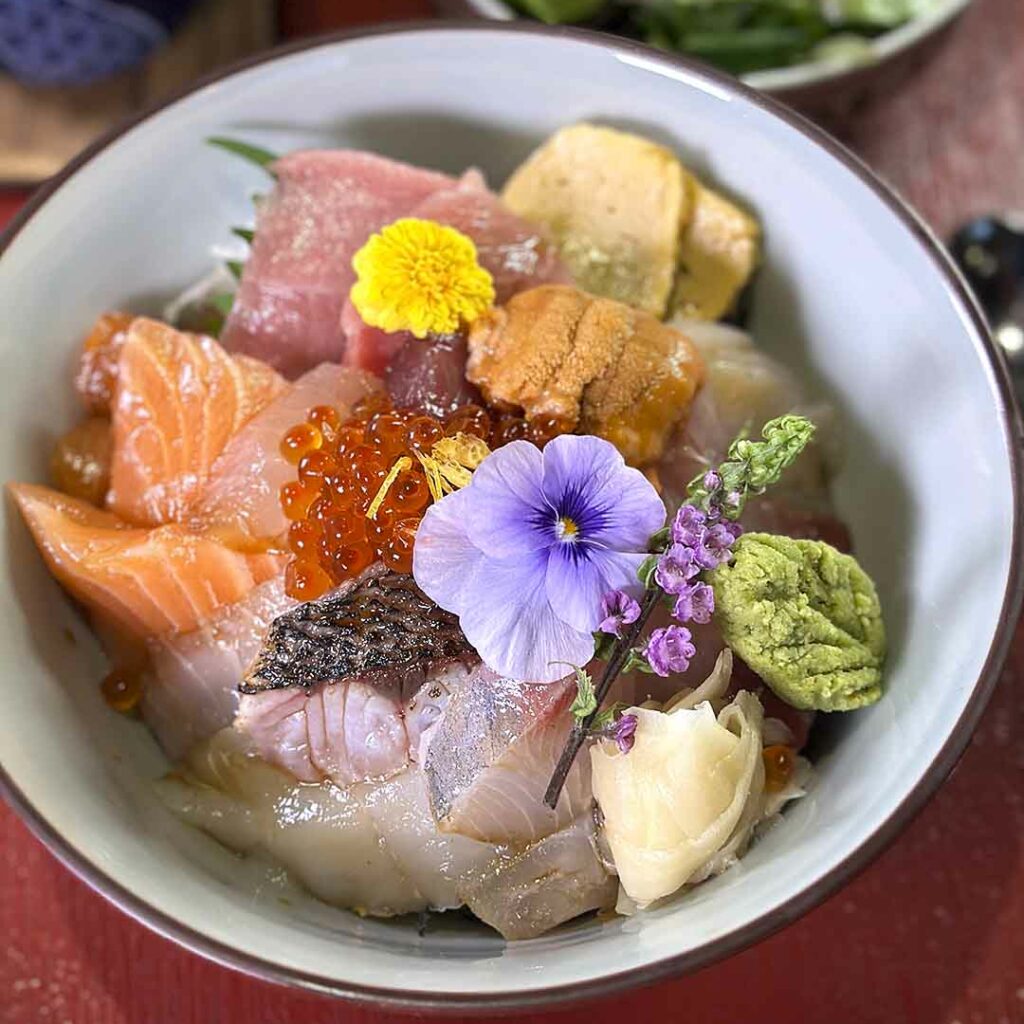
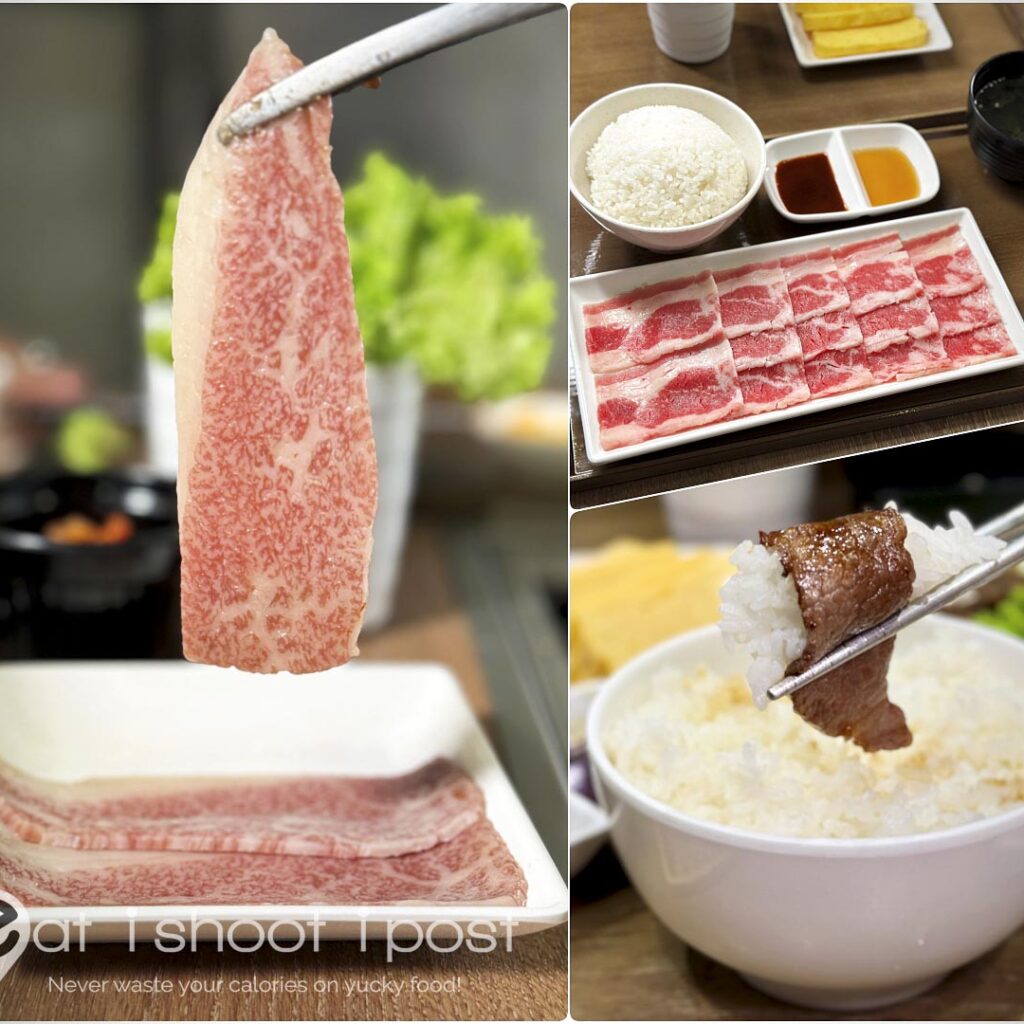



How is the A/C in that restaurant? I only ask because most Japanese people would never eat Oden in the summer months, and I know SG climate is basically summer year-a-round.
Singapore is summer all year round but you should experience our air conditioning! We are air con country and it’s better to bring your sweater when indoors.
I’ve spent many months in Singapore, so I do know how AMAZING your a/c works. Whether transiting on the MRT, taking shelter in Ion Mall, or window shopping in the Marina Bay Sands, it is always chilly and so nice!